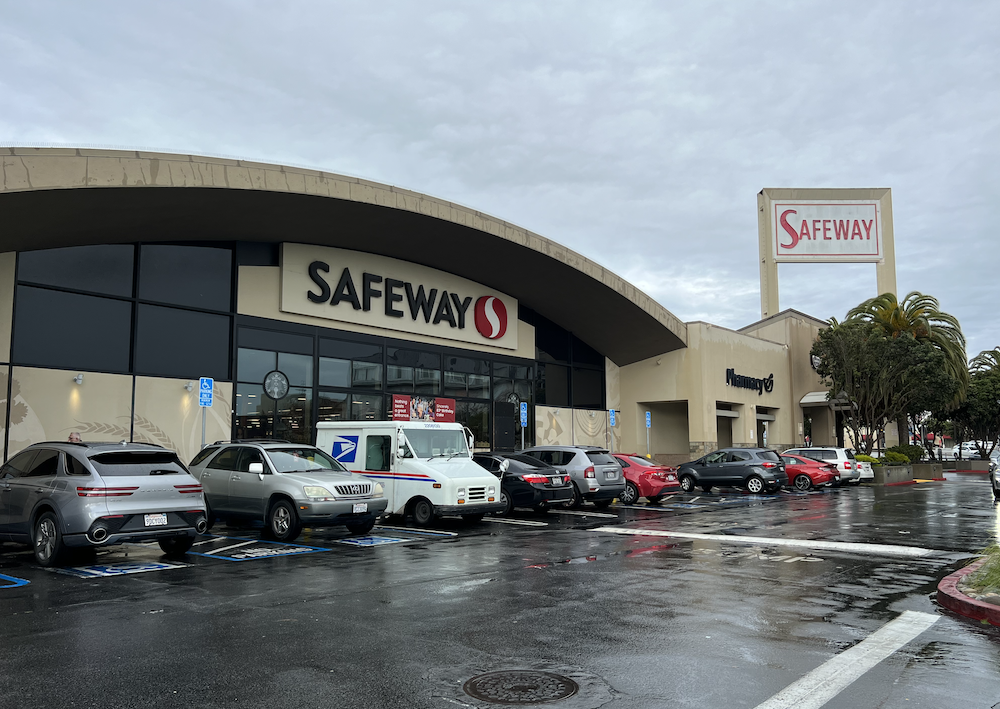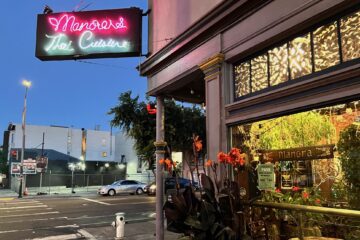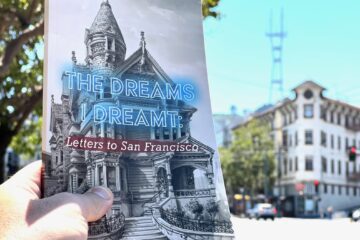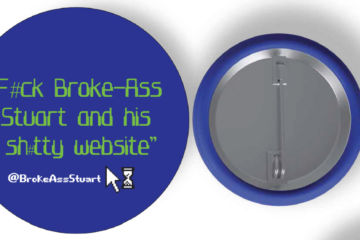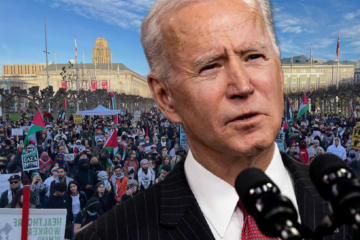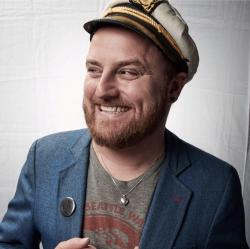SF’s First Farmers’ Market Was Where this Safeway Now Stands
Before there was a Safeway at the intersection of Market and Church Sts. it was San Francisco’s first modern farmers’ market. And it all started because of World War 2.
In a fascinating essay on FoundSF.org, a man named John Brucato tells how it all began. Due to the war effort, there were inefficiencies in the food supply chain. One day in 1943, Brucato got a call from Tom Peryham, agricultural commissioner of Marin County – which was quite rural at the time. Apparently Marin was famous for its Bartlett pears back then, but since the canneries were deluged by the wartime demand, they couldn’t take Marin’s pear crop.
Brucato explains:
“The pears were rotting on the ground. There were over 300 tons picked and boxed which could not be sold. Canneries were paying 4 cents a pound for choice pears, while pears in the retail markets in San Francisco were going from 17 to 22 cents a pound. We thought, why can’t the consumer journey to the source and get the pears cut rate? This is just what we did. “
With the help of the media, it was publicized that pears were only four cents a pound if you brought your own container. And then road signs were posted throughout Marin telling people how to get to Novato…that’s how rural Marin County was back then.
The 300 tons of pears were scooped up by enthusiastic San Franciscans in just one day.

The San Francisco Farmers’ Market at Market and Duboce on August 2, 1947. Photo from San Francisco History Center, San Francisco Public Library via FoundSF.org
Brucato tells about the “ah-ha moment” that inspired the farmers’ market saying:
“This little lesson on primitive economics started San Franciscans thinking. It was an age-old question. Who’s getting all the money between the producer and consumer? They reasoned that something must be wrong with our system of food distribution since they paid such high prices in the city while, within a radius of 35 miles, the farmers couldn’t give their crops away.”
Given the success of the pear party that had just happened, Brucato was inundated with requests by farmers in other parts of the Bay Area like Sonoma and Santa Clara Counties. But there was one big problem: gasoline
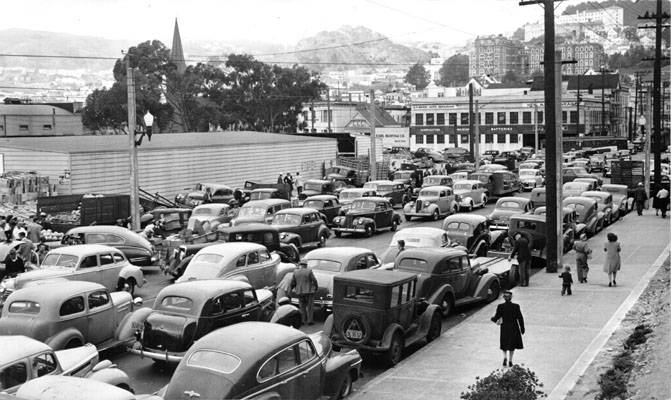
Cars parked near Farmers’ Market, Duboce and Church, August 2, 1947. Photo from San Francisco History Center, San Francisco Public Library via FoundSF.org
Since the US was in the midst of the war, gas was being rationed and the Office of Price Administration (OPA) wouldn’t allow any extra gas rations for the people clamoring for cheap produce. So Brucato and his team had a brilliant yet simple solution to get the people their food and save the farmers from bankruptcy: “If the consumer can’t go to the farmer, let the farmer come to town.”
Thus, the San Francisco Farmers’ Market was born.
On Thursday August 12,1943 the first farmer’s market opened on a one-acre lot at Market and Duboce Streets that was owned by a group of morticians named Gantner, Felder, and Kenny. That first farmer’s market only had six truckloads, and the only things they sold were apples and pears. But they sold out in less than two hours.
As Peter Hartlaub points out in this SF Chronicle article, “In 1943, it was illegal for farmers in San Francisco to sell directly to the public. Brucato had to combine a pair of loopholes, which allowed farmers to sell on an unused city lot, as long as they sold from the back of a farmer-owned truck.”
Publications like the Chronicle played a large part in the success of the farmers’ market. Because of the novelty of cutting out the Wholesale Produce Merchants and the Retail Grocers Association, who had a virtual monopoly on the selling of produce, the farmers’ market was big news.
The success of the farmer’s market was meteoric; the second day they ran it, 14 trucks showed. By the end of the month, there were over 135 farmers selling fresh produce to a crowd of 50,000 people who came and went throughout the day.
This being San Francisco though, the farmers’ market became wrapped up in red tape and controversy as quickly as it became successful. On one hand, the city wanted to take it over and handle the running of it. On the other, the Wholesale Produce Merchants and the Retail Grocers Association wanted it shut down because it was cutting into their profits.
A whole bunch of drama ensued which actually led to future mayor Joseph L. Alioto – who was a lawyer for the government at the time – prosecuting members of the Retail Grocers Association for violating the Sherman Anti-Trust Act. They were found guilty of conspiracy to fix prices of foods, groceries, and allied products at unreasonably high prices.
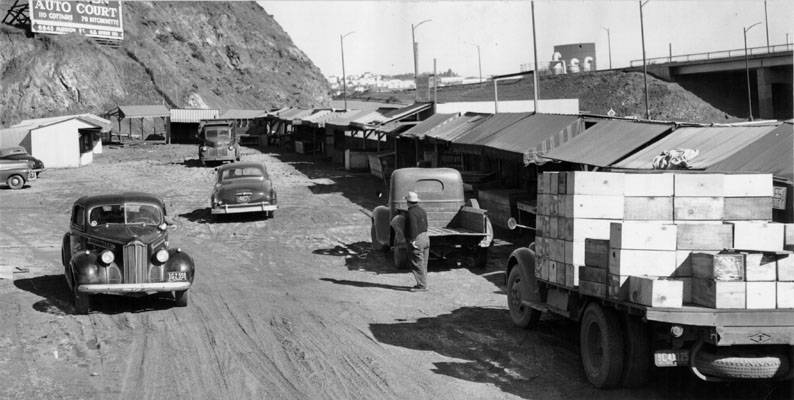
Alemany Farmers Market, February 13, 1951. Photo from San Francisco History Center, San Francisco Public Library via FoundSF.org
By August 4, 1947, the San Francisco Farmers’ Market was owned and operated by the city, on city-owned land at Alemany Boulevard and San Bruno Avenue, where it still stands today.
There’s a lot more to the story, so if you want to learn about it, highly recommended reading the whole article on FoundSF.org right here.

Howdy! My name is Katy Atchison and I'm an Associate Editor for Broke-Ass Stuart.
I want to take the time to say thank you for supporting independent news media by reading BrokeAssstuart.com. Supporting independent news sources like Broke-Ass Stuart is vital to supporting our community because it amplifies the voices of a wide variety of diverse opinions. You also help support small businesses and local artists by sharing stories from Broke-Ass Stuart.
Because you're one of our supporters, I wanted to send over a pro-tip.
Our bi-weekly newsletter is a great way to get round ups of Broke-Ass Stuart stories, learn about new businesses in The Bay Area, find out about fun local events and be first in line for giveaways.
If you’d like to get our newsletter, signup right here, it takes 5 seconds.


